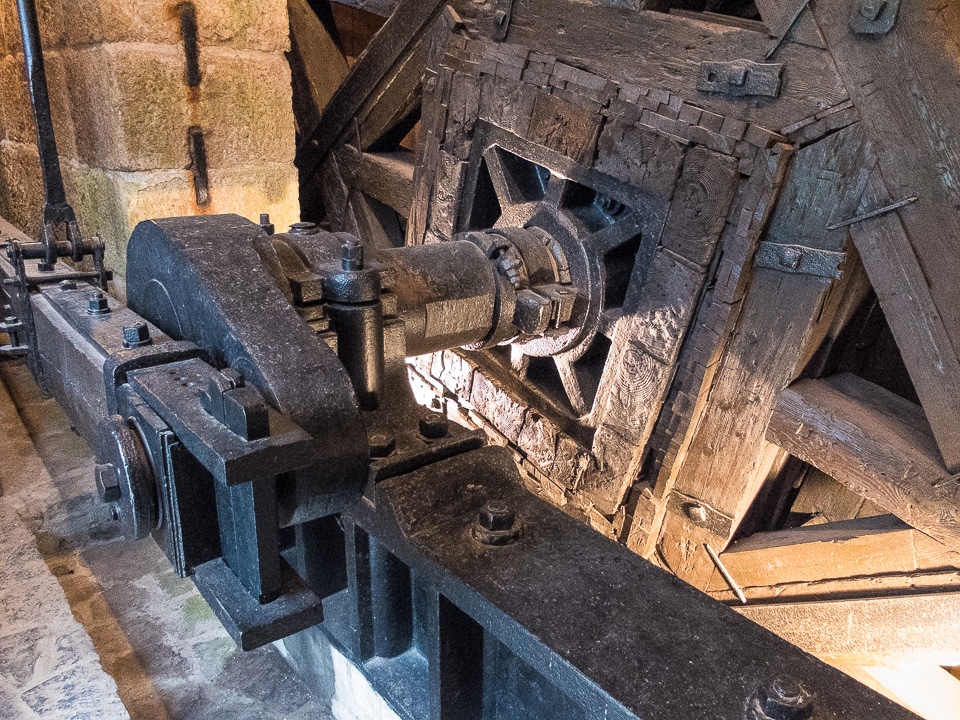
Note: this is an update of a post originally published in 2014.
One of the things we like to do as we’re traveling to a new country is to use the list of UNESCO World Heritage Sites as a touchstone for suggesting places to visit. If such a spot is easy to get to without a car, it makes it even more inviting. And that’s how we ended up in Idrija, Slovenia.
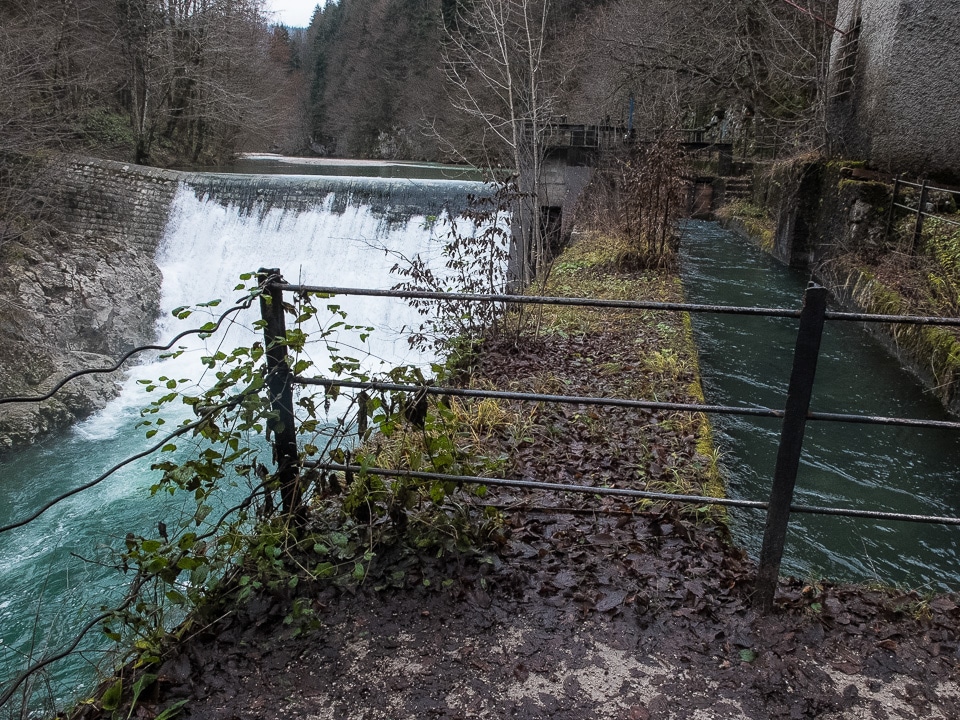
Idrija was the site of the world’s second largest mercury mine. Mercury mining started in Idrija in 1490 and continued for almost 500 years, only ending when falling prices and increased knowledge of the poisonous effects of mercury converged to make it no longer economically or ecologically viable to continue the operation. The mine was closed temporarily in 1977 and 1000 of the 1300 mine workers lost their jobs. It was reopened later, but finally closed for good in 1988. (The closing of the mine did not destroy the Idrija's economy, as a burgeoning new industry of making electronic components was already underway.)
Our first stop on our tour of Idrija was an amazing relic of the ingenuity and industry of hundreds of years ago. Over the years, as the mine went deeper and deeper under the town, a constant problem was water seeping into the dig. In 1790, Idrija came up with an ingenious major work to solve the problem.
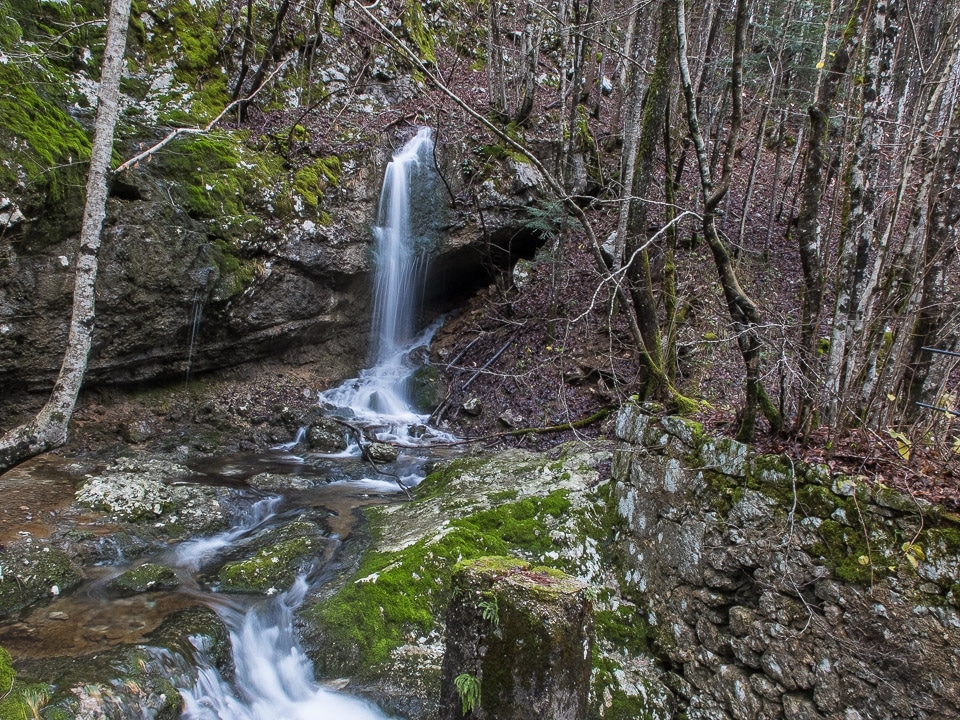
A water wheel was constructed that drove an iron and wooden pumping mechanism which cleared the mine’s galleries of water at a rate of 300 liters per minute.
The enormous water wheel – a wood and iron contraption 13.6 meters (45 feet) in diameter was turned by a stream of water diverted from a dam on the Idrijca River 2.5 kilometers away. A canal about 1.5 meters deep was dug to draw the water from the dam and run it down to the water wheel. The wheel was in use until 1948, more than 150 years from its beginning, but its main function had long been supplanted by a steam pump.
The water is still flowing in the canal, although it is now diverted back to the river ahead of the wheel.
Today, the canal provides a pleasant and sonorous companion to a pathway that wends through a forest above the fast flowing river. The path serves as a walking and jogging route for Idrijans and their dogs. We took that path up to the dam and admired the myriad cascades falling from the steep hills above into the river below.

After the pleasant walk on the path, we proceeded to actually enter the mercury mine. Originally, it had 15 levels of tunnels below the town, but since it closed, all but a couple of the levels have been filled in. That was a necessity, since parts of the town were sinking as much as six or seven centimeters per year before the galleries were filled with a combination of water and sand. Since then, the sinking has diminished to only a couple of millimeters per year.
At the mine entrance, we sat for a brief introductory movie then donned hard hats and jackets for the one hour tour.
The tour itself is a bit limited because you can only go down to about a depth of 22 meters, which is a small portion of the original mine. You reach actually almost 100 meters below the top of the hill, but the mine entrance is on the side of the hill.
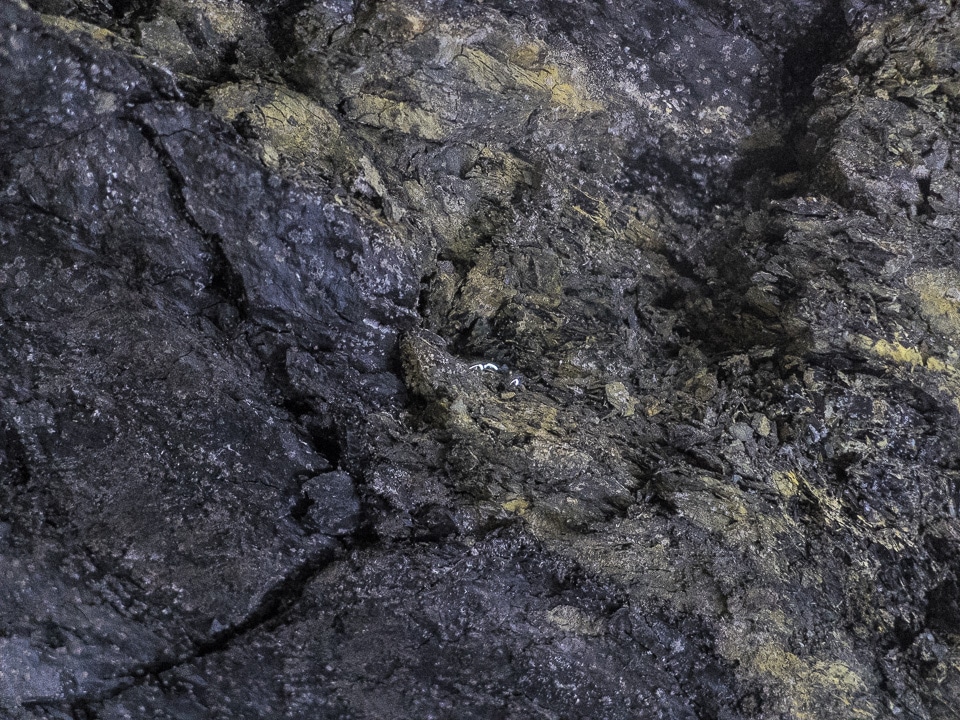
In the tunnels you do get to see, some of the gallery walls are preserved, some behind glass. Behind the glass, you can see the colorful red and blue-green strata that contained the mercury. In some cases, you can see “native mercury” that’s not locked into the ore in compound format. Little globules of the silver poison just sitting there for the taking.
And, because of the geology of the site – its stone is soft and shifting – most of the original galleries were actually filled in with processed ore as mining progressed. Otherwise, there would have been multiple and inevitable cave ins. It was cheaper, and better, to just backfill than it was to shore up expended galleries.
In fact, there was an ingenious continuous ore movement system that moved recently mined ore up and out of the mine and across the river valley to the smelter. From the smelter, the processed ore that wasn’t just dumped down the hill back toward the river, was moved back to the mine to fill in the exhausted galleries.
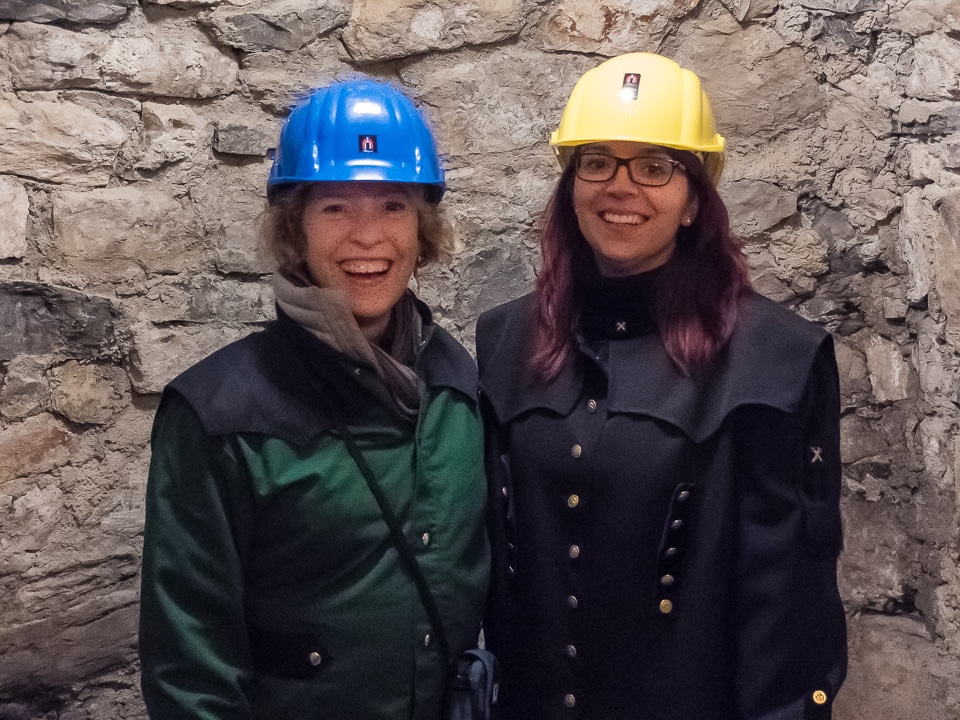
During the tour, we heard a brief history of the life of the miner – a brutal and short life to be sure. As we know now, and probably knew hundreds of years ago, mercury is extremely poisonous. Our guide told us that, on average in the 18th Century, a man only lived for five years after beginning work at the smelter. At the smelter, where the mercury was extracted from the ore through smashing and heating, the mercury was atomized and inhaled. A young man just starting to work at the smelter would often begin to have persistent nightmares within a month of starting work as the mercury began to destroy his brain.
The average life of a miner was slightly longer than that of the workers at the smelter. The mining dust took longer to infiltrate the lungs and brain that the mercury vapor of the smelter. Nevertheless, most of the miners never made it to age 40. Conditions finally improved later, as some rudimentary health measures such as masks were instituted in the middle of the 20th Century.
Our guide recounted an interesting facet to the cycle of life in Idrija: as the men died off, the widows would marry men who came from other villages outside of Idrija. If the men married a woman from Idrija, they, through that connection to the town, could get a job in the mine.
I asked the guide why a man would consign himself to such a short life. The answer, “There is no land to farm here. Either work in the mine or starve.”
It was only in the 1960s that the mine finally began to provide essential safety equipment to the miners, such as protective clothing and battery powered full face air filters. Still, it was dangerous business. Our guide told us her grandfather had to give up mining when his leg was crushed in a cave in.
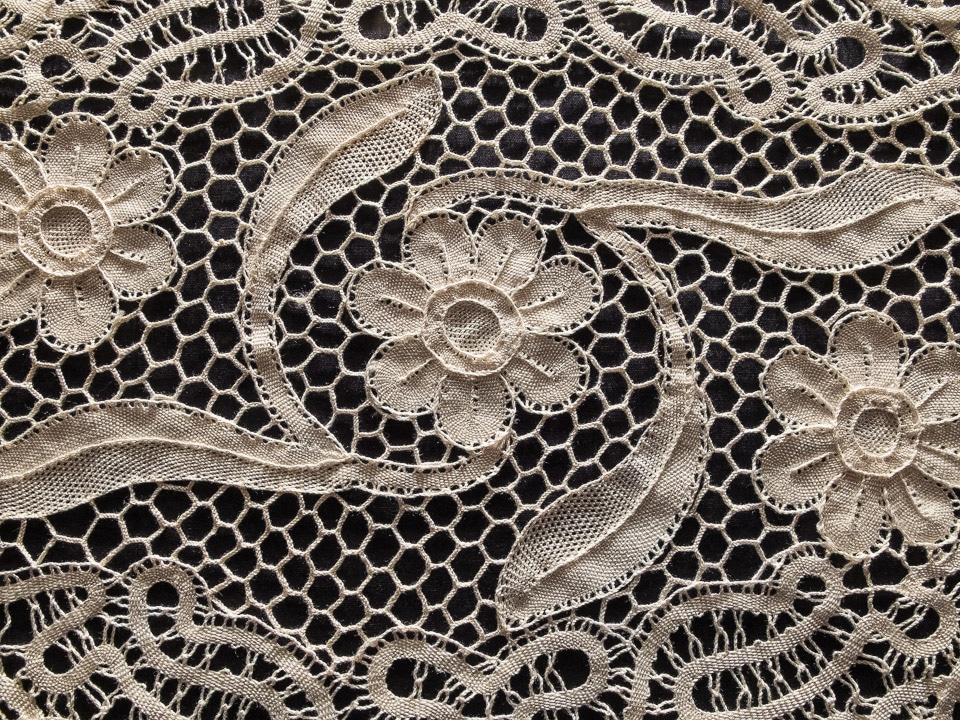
An interesting and perhaps ironic fact of life in Idrija was that while the men were working in the fatal environment of the mercury mine and smelter, the women mostly occupied themselves making elaborate and beautiful lace. It seems every girl in Idrija still learns lace making, although few of them can make a living at it today. Our guide sat at a demonstration table in the Municipal Museum and demonstrated a simple technique. She was fast and adept and kept at it for a few minutes, during which time she advanced the pattern perhaps two millimeters. I can’t imagine what it would take to complete a tablecloth, or even a napkin.
But the Municipal Museum was full of lovely examples of Idrija lace, including several of their unique asymmetric creations that require uncanny skill, imagination, and patience. Idrija lace, we were told, was a favorite among the royal families of Europe.
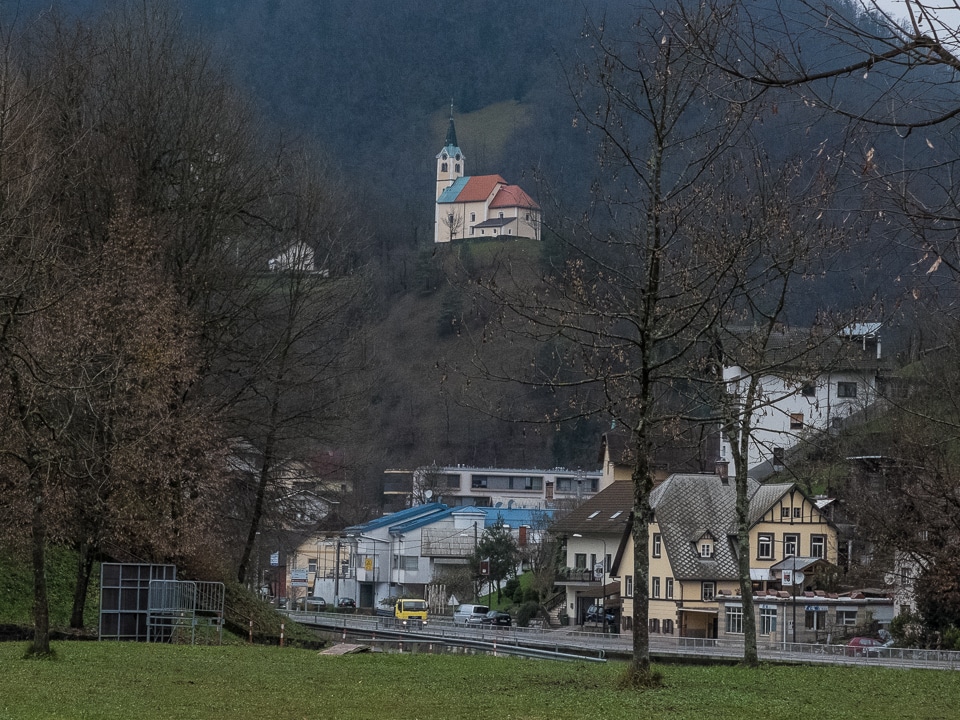
The lace is still made by the women of Idrija, although it’s no longer a large commercial endeavor. Our guide told us all girls in Idrija still learn how to make lace, although most abandon the craft as they reach their late teens in favor of going to school in an field in which they can actually make a living.
Idrija has a lace festival in June of each year year, in which the craft is demonstrated and the year’s work is shown and offered for sale. The Idrija lace making was inscribed in 2018 on the UNESCO List of the Intangible Cultural Heritage of Humanity.
Another bit of Idrija culture worth noting is its unique cuisine. Like the names of wine regions such as Champagne and Cognac are trademarked in France, a dish particular to Idrija, idrijskih žlikrofi is also “protected” by the European Union. Idrijskih žlikrofi is a small pasta dumpling, not unlike ravioli from nearby Italy. But the pasta is stuffed with a mixture of mashed potatoes and pork fat, and then covered with your choice of toppings. At Žlikrof plac (Zlikrofs' Place) Restaurant, Kris and I had the version with stewed lamb with vegetables and our guide had Gorgonzola cheese. I stared longingly across the table at our guide's plate, but minded my manners and didn’t ask for a taste. The lamb, though was enough. And delicious.
To get to Idrija, it is an easy one hour and 15 minute direct bus ride from the Ljubljana main bus terminal. You can get tickets at the terminal or online. Fares are about €6 each way.
The tour of the water wheel, the mine, and the Municipal Museum are well worth the time, and the bus ride. For more info, contact Visit Idrija.
The mercury mine at Idrija is a co-UNESCO World Heritage site with another mercury mine at Almadén, Spain. Here's a list of all UNESCO World Heritage sites in Spain.
Up Your Travel Skills
Looking to book your next trip? Use these resources that are tried and tested by us. First, to get our best travel tips, sign up for our email newsletter. Then, be sure to start your reading with our Resources Page where we highlight all the great travel companies and products that we trust. Travel Accessories: Check out our list of all the accessories we carry to make getting there and being there a lot easier. Credit Cards: See our detailed post on how to choose the right travel rewards credit card for you. Flights: Start finding the very best flight deals by subscribing to Thrifty Traveler. Book your Hotel: Find the best prices on hotels with Booking.com. See all of the gear and books we like in one place on our Amazon shop.Got a comment on this post? Join the conversation on Facebook, Instagram, or Threads and share your thoughts!

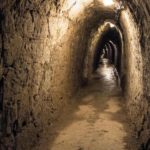

Comments are closed.